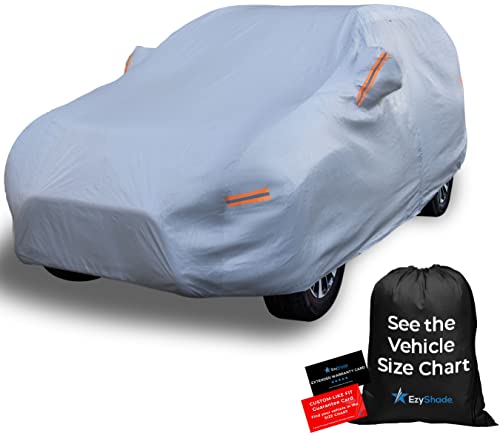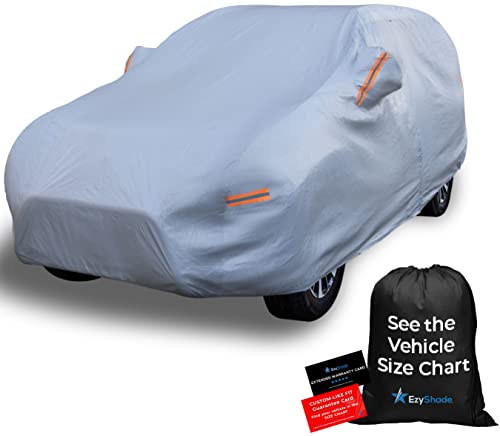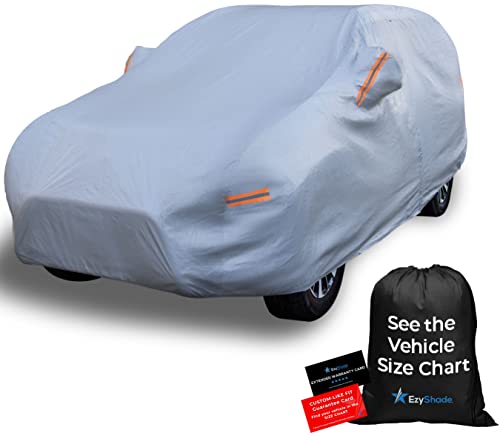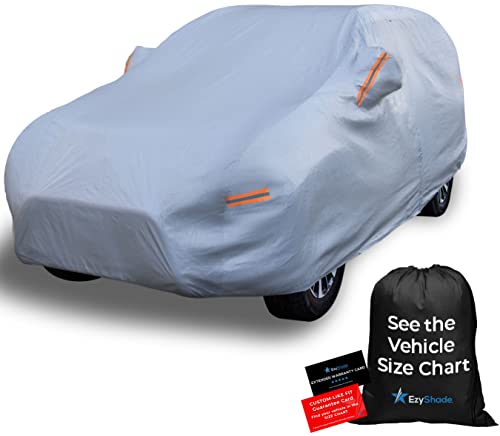Imagine this: You’ve saved for years, dreaming of conquering rugged terrains in a Mahindra Thar. Then you see the price tag and your dream threatens to crumble. Why is the Mahindra Thar so expensive? This post will delve into the reasons behind the vehicle’s high cost, breaking down the factors that contribute to its premium price point. You’ll gain a clear understanding of what you’re paying for and whether it’s worth the investment.
Mahindra Thar’s Unique Design and Build
The Thar’s distinctive design and robust construction play a significant role in its price. It’s not just an SUV; it’s designed for off-road adventures.
Body-on-Frame Construction
Unlike many modern SUVs which use monocoque construction, the Thar features a body-on-frame chassis. This strengthens the vehicle significantly for off-roading, but increases manufacturing cost and weight.
- Increased Durability: The body-on-frame construction provides superior strength and rigidity, able to withstand harsh terrains and impacts better than monocoque designs.
- Off-Road Capability: This design allows for greater suspension articulation, crucial for traversing uneven landscapes. The Thar’s ability to handle challenging terrains is a key selling point.
- Maintenance Implications: While durable, body-on-frame vehicles can be more complex and expensive to repair in case of significant damage.
Retro-Inspired Design
The Thar’s design, while modern in its capabilities, draws inspiration from classic off-road vehicles. This retro aesthetic is a significant part of its appeal but adds to production costs due to more complex design and manufacturing processes.
High-Performance Capabilities and Features
The Thar’s capabilities go beyond aesthetics. Its high-performance features contribute significantly to the price.
Powerful Engine Options
Mahindra offers various engine options for the Thar, usually a powerful diesel engine. These engines are engineered for high torque output, a critical requirement for off-road driving. The cost of developing and manufacturing these high-performance engines is considerable.
- Torque Output: The high torque is crucial for overcoming obstacles like steep inclines and difficult terrain. This performance advantage comes at a price.
- Fuel Efficiency: While powerful, these engines might not be the most fuel-efficient, impacting running costs but a trade-off for off-road capability.
- Technological Advancement: Modern diesel engines incorporate advanced fuel injection and emission control technologies, increasing their manufacturing cost.
Four-Wheel Drive System
A crucial feature for any off-road vehicle, the Thar’s four-wheel drive system is sophisticated and adds considerable cost to its manufacturing. This capability, however, is a core selling point for many buyers.
Import Duties and Taxes
Depending on the region and import regulations, the Thar’s price can be impacted by import duties and taxes. These costs are often passed on to the consumer.
Regional Variations
Prices may vary significantly depending on the country of purchase due to local taxes, import duties, and other regulatory fees. This price variation can be substantial.
- Import Tariffs: Import duties are levied on vehicles imported from other countries, significantly affecting the final consumer price.
- Sales Taxes: The final price also includes sales taxes which vary greatly from one region to another.
- Local Regulations: Regulations and compliance costs can change from country to country, impacting the final price for the consumer.
Features and Options
The price of a Mahindra Thar can vary based on the specific features and options chosen.
Optional Upgrades
Customers can choose from a range of optional add-ons such as improved audio systems, different wheel designs, or upgraded interiors. These additional features contribute to the overall cost.
- Premium Interior Options: Customers can select luxurious interior finishes, enhancing the comfort and aesthetic appeal, but increasing the final cost.
- Advanced Safety Features: Options like advanced driver-assistance systems (ADAS) can increase safety but also inflate the price.
- Customization Options: A wide range of customization choices adds to the Thar’s allure but increases the cost significantly.
Limited Production and Demand
The Mahindra Thar’s popularity and comparatively limited production capacity have led to higher demand and prices.
Debunking Myths About Mahindra Thar Pricing
Myth 1: It’s overpriced compared to competitors.
While some comparable SUVs might be cheaper, the Thar offers a unique combination of off-road capability, retro design, and robust build quality that justifies the price for many buyers. A direct price comparison might not be entirely accurate due to differing features and capabilities.
Myth 2: The price is solely due to its off-road capability.
While off-road capabilities are a significant factor, the price is also influenced by its unique design, premium materials, optional extras, and import duties and taxes. Many buyers pay a premium for the Thar’s specific features and style.
Myth 3: It’s only expensive because it’s a luxury vehicle.
While offering some luxury features as options, the Thar is not positioned as a luxury vehicle. Its price reflects its unique combination of rugged off-road capabilities, robust construction, and distinctive retro styling, not just high-end luxury.
FAQ
What are the main factors driving the Mahindra Thar’s high price?
The Mahindra Thar’s high price is driven by a combination of factors including its body-on-frame construction, powerful engine options, four-wheel-drive system, unique design elements, optional upgrades, import duties, and taxes, and the high demand compared to supply.
Is the Mahindra Thar worth the price?
Whether or not the Mahindra Thar is “worth it” depends on individual priorities and preferences. If off-road capability, unique styling, and robust build quality are high priorities, the price might be justified. For buyers seeking a purely economical vehicle, there might be more affordable alternatives.
How does the Thar’s price compare to similar off-road vehicles?
Compared to similar off-road vehicles, the Thar’s price can vary. While some competitors may be cheaper, direct comparisons are difficult due to differences in features, capabilities, and market conditions. A detailed feature-by-feature comparison is necessary for a fair assessment.
What are the common optional extras that increase the price of the Thar?
Common optional extras that add to the price include premium interior trims, upgraded infotainment systems, advanced safety features, different wheel designs, and specialized off-road accessories.
Can I negotiate the price of a Mahindra Thar?
Negotiating the price of a Mahindra Thar is possible, particularly if you’re buying from a dealer or during sales periods. However, due to the high demand, the negotiation leeway might be limited compared to other vehicles.
What are the long-term ownership costs of a Mahindra Thar?
Long-term ownership costs for a Mahindra Thar might be higher than some competitors due to factors such as fuel consumption, potentially higher insurance premiums, and the cost of parts and maintenance. However, its robust design translates into high reliability and longevity for many owners.
Are there any financing options available for purchasing a Mahindra Thar?
Most Mahindra dealerships offer financing options, allowing buyers to spread the cost over a period of time. It’s advisable to explore various financing plans to find one that suits your budget and financial goals.
Final Thoughts
Understanding why the Mahindra Thar commands a premium price requires analyzing its unique blend of design, capability, and features. It’s not just about the off-road performance; it’s the overall package that many find appealing and worth the investment. While the initial price might seem high, considering the long-term ownership aspects and the vehicle’s specialized nature, the decision rests on your individual needs and priorities. Do your research, weigh the pros and cons, and then decide if the Mahindra Thar fits into your lifestyle and budget.







